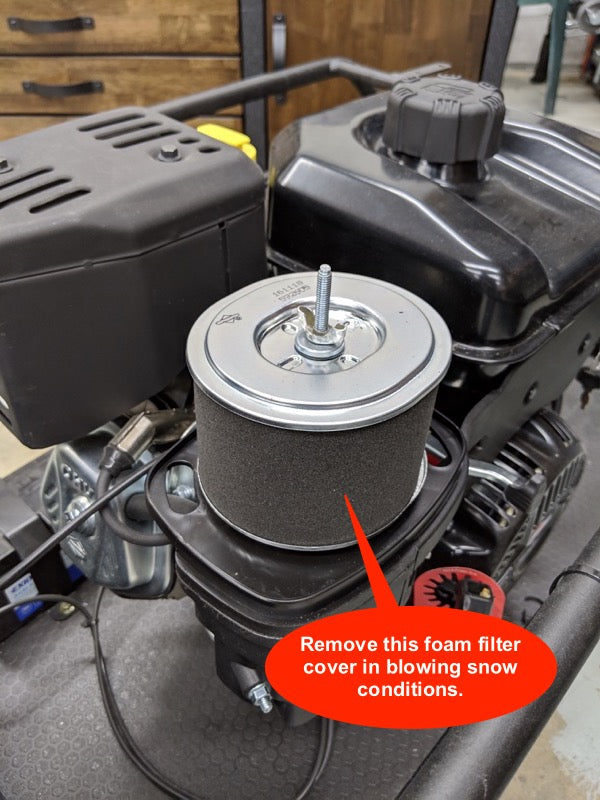It’s been an interesting winter here in Manitoba. We’ve had bitter cold and a lot of snow, which means challenging conditions for any kind of machine, including Snowdogs. We learned a lot from our first full winter as a Snowdog dealer and we want to share what we’ve learned so that every single one of your experiences in the great outdoors is a great one.
The first thing we learned is that while the Briggs and Stratton engine (the heart of the Snowdog) is reliable and rugged, it’s still just a small engine that can be affected by adverse weather and other environmental factors. This is not to say that B&S engines are not rugged and reliable engines (they are) but knowing how certain weather conditions can affect your engine will make it much easier to avoid any failures or to recover from one. Knowledge is power!
You don’t need to be an expert to be confident in troubleshooting your engine. Here are some basic troubleshooting tips to help you if you’re having trouble.
We’ll keep updating this list as we find new information, so check back often!
|
PROBLEM |
TRY THIS |
|
Engine doesn’t start at all |
If the engine won’t start using the electric starter or the pull-start, check these things: 1. Do you have fuel? 2. Is the Kill Switch (red switch on the left side of the handlebar) set to the RUN position?
3. Is the Safety Switch (the red plug in the center of the handlebar) attached and properly seated?
4. Is the fuel switch set fully to the ON position?
|
|
PROBLEM |
TRY THIS |
|
Engine starts when cold, but doesn’t stay running |
Make sure the choke is in the “on” position when starting from cold. The CHOKE is the grey lever on the right-hand side of the engine. Once the engine warms up (1-2 minutes), move the lever to the fully forward (OFF) position. You typically do not need to use the choke when the engine is warm.
Pull starting is recommended for cold starts to conserve the battery. |
|
PROBLEM |
TRY THIS |
|
Engine runs roughly after an outing |
Remove the spark plug cover and unscrew the sparkplug with a spark plug socket tool.
Option 1: Inspect the spark plug for black residue. If it looks dirty, clean it off using a degreaser, or fine sandpaper. Option 2: Replace the spark plug (Champion RN9YC or equivalent). |
|
PROBLEM |
TRY THIS |
|
Electric start seems to have power, but won’t turn over the engine |
It’s possible that the engine is “hydro-locked”, which makes it VERY hard to turn over, even with the pull-start. Option 1: Using the pull start, gently but firmly pull the recoil cord until the engine “releases” and turns more freely. Pull start as normal. Option 2: Remove the spark plug cable, and using a spark plug socket, remove the spark plug. It may appear extra tight because of built-up pressure in the cylinder. Replace the spark plug, re-attach the cable, pull start the engine as normal. |
|
PROBLEM |
TRY THIS |
|
Engine runs, but after continuous use, performance is sluggish. |
Open the front and top zippered vent to allow airflow through the engine compartment. This engine is air-cooled and requires ventilation even in cold weather. In the summertime, ALWAYS operate with the vents open or the cover off completely. |








Share: